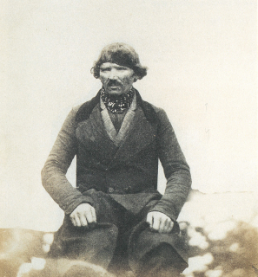In 1852 and 1853 Carl Durheim, a pioneering photographer from Bern, was commissioned by the Confederation to photograph hundreds of stateless persons and travellers who had been picked up and detained. The result was a unique collection of police photographs. The Swiss Federal Archives have now digitised the more than 200 salt paper prints and published them on Wikimedia Commons.

In the 19th century, stateless people and travellers were seen as a regulatory and socio-political problem. Social reformers viewed "vagrancy" as an ill which should be overcome in a progressive society. Right up until the 19th century, "beggar hunts" took place during which impoverished people and travellers were expelled from individual communities. Later the methods became more subtle: regular work, a fixed abode and compulsory schooling for children were designed to integrate travellers into society and bring an end to the itinerant lifestyle. The measures were enforced by a mixture of aid and compulsion.
From 1849 to 1852, the immigration police carried out an operation throughout Switzerland to identify, register and compulsorily naturalise stateless people. In early 1852, the pioneering photographer Carl Durheim from Bern was commissioned by the Confederation to photograph the stateless and travellers in one of the city's prisons. It is currently believed that the resulting portraits are the world's earliest surviving collection of police photographs.
A clearly defined population group was systematically photographed and described in standardised form on behalf of the authorities. The new technology of photography made it easier to identify people from their appearance and was regarded as an advance in police work.
The photograph collection in the Federal Archives
The Federal Archives hold 221 salt paper prints of Carl Durheim's police photographs. They have now been digitised and made accessible on Wikimedia Commons. Salt papers are photographic papers sensitised using silver chloride that were chiefly used in the calotype process. The fibrous structure of the paper resulted in coarse-grained images with soft, slightly blurred contours that give the photographs a painting-like appearance. Salt paper was only used in photography for a short period. It was also susceptible to yellowing and fading, and so is a rarity in photographic collections.
The collection is an interesting source of information on the history of photography, as it tells us about the working methods of one of Switzerland's first professional photographers. It also reflects the attitude of 19th-century bourgeois society to stateless people and travellers, who were considered as an alien group. More background information and links to further documents at the Federal Archives can be found on the Stateless persons and travellers page.
Further information
Contact
Swiss Federal Archives
Archivstrasse 24
3003 Bern
- Tel.
- +41 58 462 89 89
Opening hours reading room
Tu-Th, 9 a.m. to 7 p.m.





